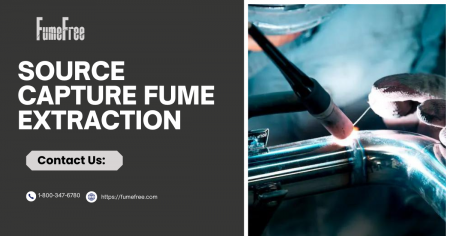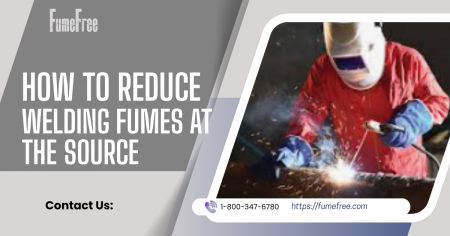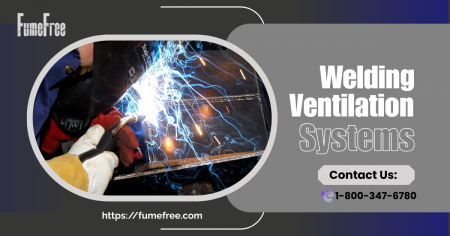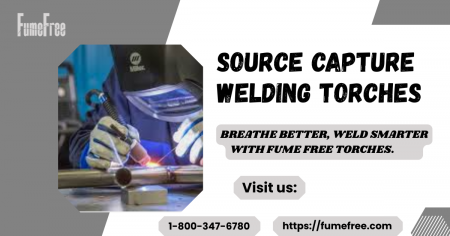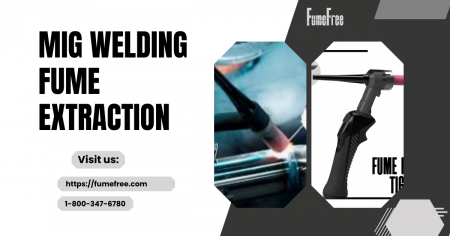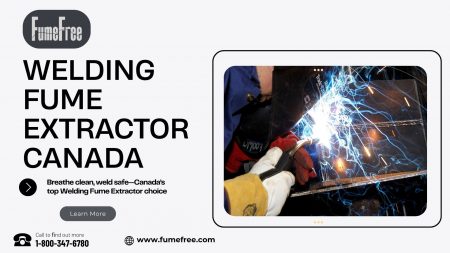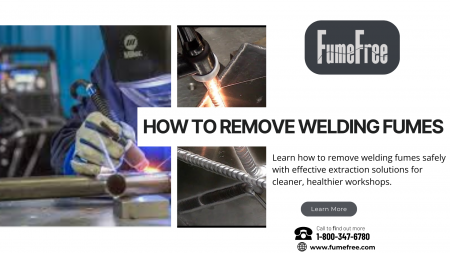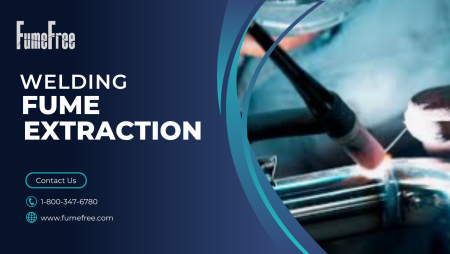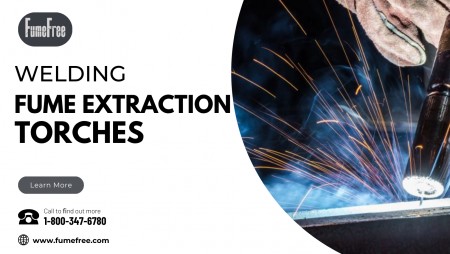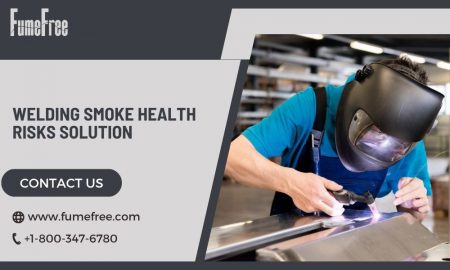Introduction
You walk into your shop every morning ready to work. But there’s something you can’t see that’s slowly damaging your lungs. Welding fumes contain toxic metal particles that linger in the air long after you finish a job. For small fabrication spaces, this invisible threat is even more dangerous.
A portable welding fume extractor for small shops isn’t just another piece of equipment. It’s your first line of defense against serious respiratory problems. Unlike large industrial facilities with built-in ventilation, small shops face unique challenges. Limited space, tighter budgets, and closer proximity to fumes make protection critical.
This guide shows you why investing in a portable welding fume extractor for small shops makes sense for your health, your wallet, and your business. You’ll learn what these systems do, how to choose the right one, and why waiting could cost you more than money.
Understanding Welding Fumes and Why They're Dangerous
What’s Actually in Welding Smoke?
When you strike an arc, temperatures reach over 10,000°F. This extreme heat vaporizes metal and creates a complex mixture of gases and particles. You’re not just breathing in smoke—you’re inhaling a chemical cocktail.
Welding fumes contain:
- Manganese (linked to neurological damage)
- Hexavalent chromium (a known carcinogen)
- Iron oxide particles
- Zinc oxide from galvanized steel
- Nickel compounds
- Aluminum particles
- Various toxic gases, including ozone and nitrogen oxides
These particles are incredibly small—often less than 1 micron in diameter. That means they bypass your body’s natural defenses and go straight into your lungs. From there, they enter your bloodstream and can affect your brain, kidneys, and other organs.
Short-Term vs Long-Term Health Risks
Immediate effects show up within hours or days. You might experience metal fume fever, which feels like the flu. Symptoms include headaches, dizziness, nausea, and breathing difficulties. Your throat gets irritated, and you might develop a persistent cough.
Long-term exposure is where things get serious. Studies show that welders face higher risks of chronic bronchitis, emphysema, and lung cancer. Manganese exposure can lead to symptoms similar to Parkinson’s disease. Some welders develop asthma that never goes away.
The American Welding Society reports that welding fumes cause more occupational illnesses than any other manufacturing process. Without proper extraction, you’re playing Russian roulette with your health every time you weld.
Why Small Shops Are at Higher Risk
Limited Ventilation in Compact Spaces
Your small shop doesn’t have the luxury of industrial-scale ventilation. Many fabricators work in garages, small commercial spaces, or home workshops. These environments trap fumes and create dangerous concentrations.
Think about it this way: in a 20×30-foot shop with 10-foot ceilings, you have just 6,000 cubic feet of space. A typical welding operation can generate concentrated fumes that quickly fill this volume. Without active extraction, those fumes recirculate through your breathing zone.
Natural ventilation through doors or windows isn’t enough. Wind patterns are unpredictable, and opening doors in winter or summer affects your comfort and energy costs. Plus, you can’t always work with doors open due to security, noise restrictions, or weather.
OSHA Standards for Small Fabrication Businesses
OSHA doesn’t give small shops a pass on safety. The permissible exposure limit (PEL) for welding fumes is 5 mg/m³ for respirable particles. This applies whether you employ 50 people or work alone.
Key OSHA requirements include:
- Adequate ventilation to keep fume concentrations below PELs
- Written hazard communication programs
- Worker training on fume hazards
- Medical surveillance for exposed workers
- Personal protective equipment when engineering controls aren’t sufficient
Violations can result in fines ranging from $15,625 to $156,259 per violation. Beyond fines, you could face workers’ compensation claims or personal injury lawsuits. A portable welding fume extractor for small shops helps you meet these requirements affordably.
What Is a Portable Welding Fume Extractor?
How These Systems Work
A portable welding fume extractor for small shops is a self-contained air filtration unit on wheels. It captures welding fumes at the source before they spread throughout your workspace.
The system includes three main components:
- Capture hood or flexible arm: You position this near your welding arc to catch fumes as they rise. Quality units offer 360-degree positioning and hold their position without sagging.
- Filtration system: Air passes through multiple filter stages. Pre-filters catch large particles. HEPA filters trap 99.97% of particles down to 0.3 microns. Some units add activated carbon filters for gases and odors.
- Fan or blower motor: This creates negative pressure to pull fumes through the system. Motor power is measured in cubic feet per minute (CFM). Higher CFM means stronger suction and better capture.
The filtered air returns to your shop, so you’re not wasting heated or cooled air. This closed-loop system saves energy compared to exhaust-only ventilation.
Portable vs Fixed Extraction Systems
Fixed systems mount to walls or ceilings. They work well if you always weld in the same spot. But installation requires ductwork, cutting holes in your building, and professional setup. Costs start around $5,000 and can exceed $20,000.
Portable units offer flexibility. You move them wherever you’re working. They require no installation—just plug into a standard outlet. Prices range from $800 to $4,000 for quality units. You can take them to different job sites or reposition them as your shop layout changes.
For small shops, portability wins. You get professional-grade protection without permanent modifications to your space. If you move locations, your investment moves with you.
Top 5 Benefits of Using a Portable Welding Fume Extractor for Small Shops
1. Immediate Health Protection
Every breath you take in a fume-filled shop does damage. A portable welding fume extractor for small shops starts protecting you the moment you turn it on.
Quality extractors remove over 99% of harmful particles from your breathing zone. You’ll notice the difference immediately—no more metallic taste, less coughing, and clearer airways. Over time, you’re preventing chronic lung disease and reducing cancer risk.
Your family benefits too. Without extraction, you carry fume residue home on your clothes and skin. These toxic particles expose your loved ones to the same hazards. Proper extraction keeps workplace hazards at work.
2. Cost-Effective Solution
Hospital bills for respiratory illness can bankrupt a small business. Treatment for occupational lung disease costs tens of thousands of dollars. Lost work time adds more financial pain.
A good portable welding fume extractor for small shops costs $1,500 to $3,000. Compare that to:
- Average emergency room visit: $2,200
- Occupational asthma treatment: $50,000+ over a lifetime
- Lung cancer treatment: $200,000 to $500,000
- OSHA violation fine: up to $156,259
The extractor pays for itself by preventing just one serious health incident. It’s not an expense—it’s health insurance that actually works.
3. Flexibility and Mobility
Small shops handle diverse projects. One day, you’re working on a table in the center of your space. The next day, you’re welding against a wall or working on a large assembly.
Portable units adapt to your workflow:
- Wheel them to any workstation
- Position the capture arm at the optimal angle
- Move between different welding processes
- Take them to customer sites for field repairs
- Reposition for different operators or projects
This flexibility means you always have extraction where you need it. Fixed systems can’t match this adaptability without expensive ductwork modifications.
4. Compliance with Safety Regulations
Staying legal protects your business. OSHA inspections can happen anytime, and violations create serious problems. Insurance companies check safety practices before issuing policies. Clients increasingly require proof of proper safety equipment.
A portable welding fume extractor for small shops demonstrates your commitment to safety. It provides documented proof that you’re taking exposure seriously. Many units include data logging to show usage patterns and filtration performance.
This documentation helps with:
- OSHA compliance records
- Workers’ compensation rate negotiations
- Insurance policy renewals
- Client safety audits
- Employee recruitment and retention
5. Increased Productivity
Clean air means better focus. Welders working in fume-filled environments experience fatigue, headaches, and reduced concentration. These symptoms slow you down and increase mistakes.
With proper extraction, you maintain peak performance throughout the day. You spend less time dealing with respiratory irritation and more time producing quality work. Your error rate drops because you’re thinking clearly.
Better visibility helps, too. Heavy fumes obscure your view of the weld pool. This leads to defects that require rework. A portable welding fume extractor for small shops clears the air so you can see what you’re doing.
Key Features to Look for When Buying
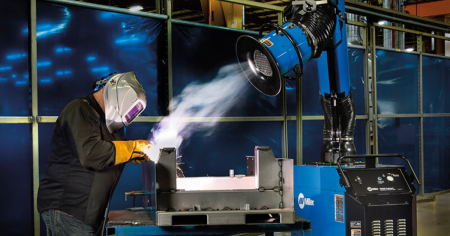
Filtration Technology Explained
Not all filters work the same way. Understanding filtration technology helps you choose the right portable welding fume extractor for small shops.
Multi-stage filtration works best:
Stage 1 – Pre-filter: Catches large particles and spatter. This protects downstream filters and extends their life. Pre-filters are inexpensive and easy to replace.
Stage 2 – Main filter: Usually a pleated or cartridge-style filter rated for fine particles. Look for filters certified to capture at least 95% of particles at 0.5 microns.
Stage 3 – HEPA filter: The gold standard for particle removal. True HEPA filters capture 99.97% of particles at 0.3 microns. Some welding applications require HEPA filtration by law.
Optional Stage 4 – Activated carbon: Removes ozone, nitrogen oxides, and odors. Important if you weld stainless steel or work with galvanized materials.
Check filter replacement costs and availability. Some manufacturers charge premium prices for proprietary filters. Others use standard sizes that cost less and are easier to find.
CFM Ratings and Coverage Area
CFM (cubic feet per minute) measures how much air the system moves. Higher CFM means stronger suction and better fume capture.
CFM requirements depend on several factors:
- Welding process (MIG, TIG, stick)
- Material type (steel, aluminum, stainless)
- Amperage used
- Distance from the fume source
- Shop size and ventilation
For most small shop applications, look for these minimum CFM ratings:
Welding Process | Minimum CFM | Recommended CFM |
TIG welding | 250-350 | 400-500 |
MIG welding (light) | 350-450 | 500-700 |
MIG welding (heavy) | 500-700 | 800-1,000 |
Stick welding | 600-800 | 1,000-1,200 |
Flux-core welding | 700-900 | 1,200-1,500 |
More powerful units handle larger coverage areas. A 500 CFM system works for a single welding station. If you need to cover multiple work areas, consider 800-1,000 CFM or multiple smaller units.
Portability and Maneuverability
A portable welding fume extractor for small shops should actually be portable. Some units claim portability but are awkward to move.
Check these mobility features:
Wheels: Look for large casters (at least 4 inches) with locking mechanisms. Pneumatic wheels roll smoothly over rough floors. Two fixed and two swivel wheels provide stability and maneuverability.
Weight and balance: Units should be heavy enough for stability but not so heavy that you can’t move them easily. Most weigh 50-150 pounds. Bottom-heavy designs are less likely to tip.
Arm flexibility: Extraction arms should extend, rotate, and hold position without tools. Ball-joint designs offer more movement than single-pivot arms. The arm should stay where you position it without drifting.
Footprint: Compact designs fit in tight spaces. Check dimensions to ensure the unit fits through doorways and between equipment.
Cord length: Look for 15-20-foot power cords. This reduces the need for extension cords and improves safety.
Real-World Applications in Small Shops
One-Person Operations
Solo fabricators face unique challenges. You’re the welder, the business owner, and the safety officer. There’s no one else to notice if you’re being exposed to dangerous fumes.
A portable welding fume extractor for small shops works perfectly for solo operations:
You set up for a job and position the extraction arm near your work. As you weld, fumes get pulled into the system before they reach your face. When you move to a different project, you wheel the unit along with you.
One Massachusetts fabricator shared his experience: “I worked for 15 years without extraction. Started getting short of breath climbing stairs. The doctor said my lungs showed early damage. Bought an extractor and within months, I was breathing easier. Wish I’d done it sooner.”
Solo operators often work longer hours in smaller spaces. This increases exposure time. A portable extractor protects you even during extended welding sessions.
Multi-Station Workshops
Shops with 2-5 employees benefit from portable extractors’ flexibility. Rather than installing expensive fixed systems at every station, you can move units as needed.
Effective strategies include:
Shared units: Two welders working different shifts can share one extractor. This cuts costs while maintaining protection.
Project-based deployment: Position extractors at the most active welding stations. When the project focus shifts, move the equipment to match.
Combination approach: Install fixed extraction at your primary welding bay. Use portable units for secondary stations, grinding areas, or specialty work.
One California custom motorcycle shop runs three welding bays. They invested in two high-CFM portable extractors that move between stations based on workload. “We tried to make one fixed system work,” the owner explained. “Kept needing ventilation where we didn’t have it. Going portable solved that problem and cost us less.”
Cost Analysis: Investment vs Health Expenses
Let’s break down the real costs of portable welding fume extractors for small shops versus the price of not having one.
Initial equipment investment:
- Entry-level portable unit: $800-$1,500
- Mid-range unit (recommended): $1,500-$3,000
- Professional-grade unit: $3,000-$5,000
Annual operating costs:
- Pre-filter replacement (quarterly): $100-$200
- Main filter replacement (annually): $200-$400
- HEPA filter replacement (every 2-3 years): $300-$600
- Electricity (based on 40 hours/week): $75-$150
- Total annual cost: $375-$750
Health costs without extraction (potential):
- Occupational asthma treatment: $3,000-$10,000 annually
- COPD treatment: $5,000-$15,000 annually
- Lung cancer treatment: $200,000-$500,000
- Lost work time: $10,000-$50,000 annually
- Reduced life expectancy: priceless
Business costs without extraction:
- OSHA fine (serious violation): $15,625
- OSHA fine (willful violation): $156,259
- Workers’ comp claim: $30,000-$200,000
- Increased insurance premiums: 20-50% annually
- Legal fees if sued: $50,000-$500,000
The math is simple. A $2,500 extractor with $500 annual operating costs equals $3,500 in the first year. Compare that to a single emergency room visit for metal fume fever at $2,200, or an OSHA fine that could exceed $15,000.
Return on investment timeline:
If the extractor prevents one serious health incident or OSHA violation in 10 years, you’re ahead. But the reality is better. You’ll likely avoid multiple minor incidents, reduce sick days, maintain higher productivity, and sleep better knowing you’re protected.
Common Mistakes Small Shop Owners Make
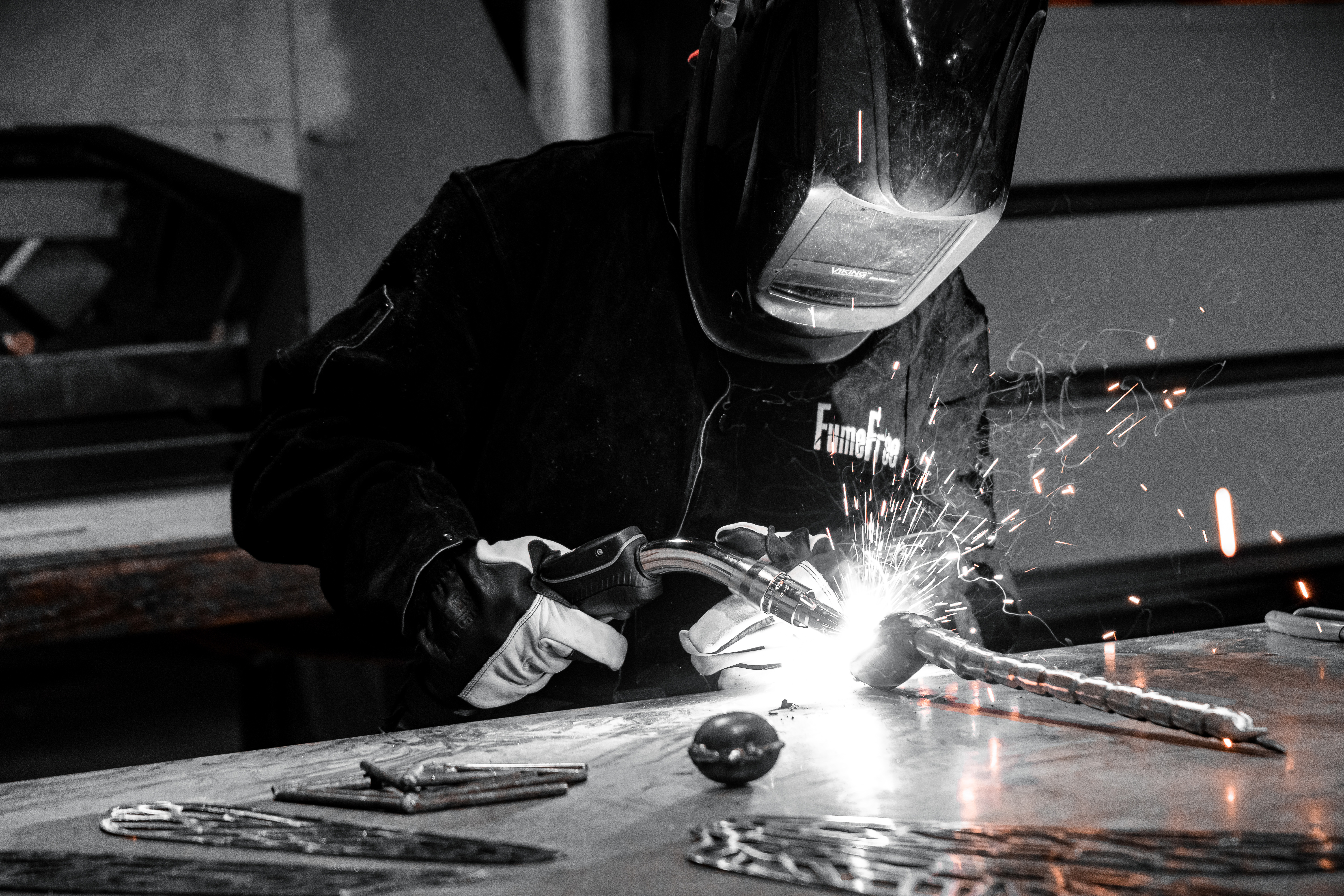
- Relying on fans instead of filtration
Box fans don’t filter—they just move fumes around your shop. You’re still breathing the same toxic particles. Some welders point fans at their work, thinking this helps. Actually, it can blow fumes directly into your face.
- Positioning the extractor too far away
Capture efficiency drops dramatically with distance. If your extraction arm is more than 12-18 inches from the weld, you’re losing 50% or more effectiveness. Fumes rise quickly and spread before being captured.
3. Neglecting filter maintenance
Clogged filters don’t just reduce performance—they can damage the motor. Many welders forget to check pre-filters monthly. When the system struggles to pull air, they think it’s underpowered when it just needs a $20 filter change.
4. Buying based on price alone
The cheapest unit often costs more long-term. Poor filtration means continued exposure. Weak motors can’t capture fumes effectively. Proprietary filters from unknown brands become impossible to source.
5. Not matching the CFM to the welding process
A 300 CFM unit works great for light TIG welding. But try using it for heavy flux-core work, and you’ll barely notice a difference. The system can’t pull enough air to capture the massive fume volume.
6. Ignoring arm positioning
The extraction arm should be positioned to intercept rising fumes before they reach your breathing zone. Many welders put it off to the side or too high. Optimal positioning is slightly behind and above the weld at a 45-degree angle.
7. Thinking “I don’t weld that much”
Even occasional exposure causes harm. Toxic metals accumulate in your body over time. Weekend warriors face the same risks as full-time professionals—it just takes longer to show symptoms.
Maintenance Tips to Extend Equipment Life
Your portable welding fume extractor for small shops will last 10+ years with proper care.
Monthly tasks (15 minutes):
Inspect the pre-filter and replace it if visibly dirty
Check the extraction arm joints for looseness
Test airflow by holding paper near the intake
Wipe exterior surfaces to prevent dust buildup
Verify wheels roll smoothly and locks engage
Quarterly tasks (30 minutes):
Replace the pre-filter even if it looks clean
Vacuum around the motor housing
Check the power cord for damage
Test all controls and switches
Inspect flexible ducting for tears or holes
Annual tasks (1-2 hours):
Replace the main filter cartridge
Lubricate wheel bearings if needed
Check motor mounts and tighten bolts
Inspect wiring connections
Clean or replace fan blades if accessible
Test motor amperage draw to detect problems early
HEPA filter replacement (every 2-3 years):
Monitor the pressure gauge if equipped
Replace when airflow drops noticeably
Keep spare filters on hand
Document replacement dates
Common problems and solutions:
Weak suction: Check filters first. A clogged pre-filter is usually the culprit. If filters are clean, inspect for air leaks at joints and seals.
Excessive noise: Motor bearings may need lubrication. Loose panels can vibrate and rattle. Tighten all fasteners before assuming motor damage.
Arm won’t hold position: Joints loosen over time. Most use set screws that need periodic tightening. Don’t overtighten—you’ll strip threads.
Sparks getting through: Pre-filter may have holes or a poor seal. Always use spark arrestor screens if included. Never bypass pre-filters.
Keep a maintenance log. Note filter changes, repairs, and performance issues. This documentation helps with warranty claims and proves due diligence for safety inspections.
Frequently Asked Questions
Q: Do I really need a portable welding fume extractor if I only weld a few hours per week?
Yes. Toxic metal exposure is cumulative. Even small amounts add up over months and years. Weekend hobbyists develop the same respiratory problems as full-time welders—it just takes longer. Protection makes sense regardless of how often you weld.
Q: Can I use a shop vac instead of buying a dedicated extractor?
No. Shop vacuums don’t have the right filtration for sub-micron welding fumes. The particles pass through standard filters and blow back into your shop. You need HEPA-grade filtration specifically designed for metal fumes. Shop vacs also lack the CFM needed for effective capture.
Q: How close does the extraction arm need to be to my welding?
Position the arm 6-12 inches from the weld for optimal capture. The maximum effective distance is about 18 inches. Beyond that, capture efficiency drops below 50%. Angle the arm slightly to intercept rising fumes before they reach your breathing zone.
Q: Will a portable welding fume extractor work in an already well-ventilated shop?
Yes. General ventilation improves overall air quality but doesn’t capture fumes at the source. You can have excellent ventilation and still breathe concentrated fumes while welding. Source capture extraction is the most effective protection method.
Q: How often do filters need replacement?
Pre-filters need replacement every 1-3 months, depending on use. Main filters last 6-12 months. HEPA filters typically last 2-3 years. Usage patterns, welding processes, and materials affect lifespan. Monitor airflow and replace filters when suction weakens noticeably.
Q: Can I use one portable extractor for both welding and grinding?
You can, but with caution. Grinding generates more sparks and larger particles that can damage filters. Use a spark arrestor and inspect pre-filters more frequently. Some welders prefer separate units for grinding to extend welding filter life.
Q: What’s the difference between an $800 unit and a $3,000 unit?
Higher-priced units typically offer stronger motors (more CFM), better filtration efficiency, more durable construction, longer-lasting filters, and better warranties. They also capture fumes from higher-amperage welding. Budget units work for light hobby use, but professionals need the performance of mid to high-end models.
Q: Do portable extractors work for all welding processes?
Most work with MIG, TIG, and stick welding. Flux-core welding generates extremely heavy fumes and needs higher CFM ratings. Some specialized processes, like plasma cutting, require specific filtration. Match the unit’s specifications to your specific welding processes.
Conclusion
Your lungs can’t filter out manganese, hexavalent chromium, and toxic metal particles. A portable welding fume extractor for small shops can.
This isn’t about spending money on equipment you don’t need. It’s about protecting your most valuable asset—your health. Small fabrication spaces concentrate welding fumes in ways that large facilities don’t experience. Without active extraction, you’re breathing dangerous concentrations of toxic particles every time you strike an arc.
The benefits extend beyond health protection. You gain OSHA compliance, lower insurance costs, increased productivity, and peace of mind. The flexibility of portable units means you get professional-grade protection without the installation costs and permanent modifications of fixed systems.
Quality units cost $1,500-$3,000—roughly what you’d pay for a mid-range welding machine. The difference is your welder makes you money. Your extractor saves your life.
Small shop owners often delay this investment. They tell themselves they’ll buy one later, when business improves, when they have extra cash. But lung damage doesn’t wait. Every day without extraction exposes you to permanent harm.


